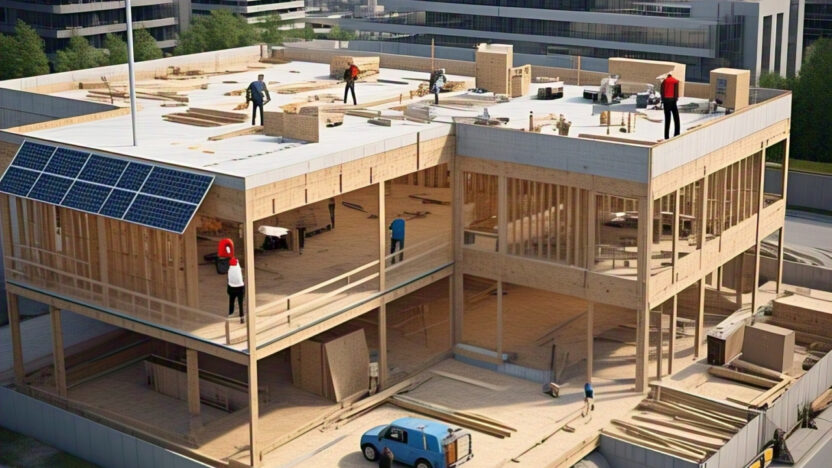The construction and architectural industries are evolving rapidly. With increasing complexity in building functions, sustainability targets, and occupant needs, the traditional prescriptive approach to building codes often limits innovation. This is where Performance Based Building Design Canada becomes a game-changer.
Instead of merely following checklists in the code, this approach allows design teams to propose solutions that meet or exceed the intent of building regulations—while accommodating creative, cost-effective, or otherwise non-standard building systems.
What Is Performance Based Building Design?
Performance based building design refers to the process of designing buildings to meet functional goals (like fire safety, energy efficiency, or structural integrity) rather than simply conforming to code-prescribed methods.
In Canada, it allows professionals to demonstrate compliance with the National Building Code of Canada (NBCC) through alternative solutions—using engineering analysis, simulations, and professional judgement to show that the building will perform safely and effectively.
It’s not a shortcut. It’s a sophisticated, code-compliant pathway that enables more tailored, optimized designs.
Why Is It Gaining Traction in Canada?
There’s a growing demand for Performance Based Building Design Canada, particularly in:
- High-rise and complex commercial buildings
- Mass timber and hybrid structures
- Sustainable and net-zero buildings
- Heritage building upgrades
- Mixed-use or multi-functional occupancies
Canada’s urban centers are pushing architectural and technological boundaries. Prescriptive code language often lags behind modern design intent. Performance-based design bridges this gap.
How Does It Work?
Instead of checking boxes, you start by defining goals—like fire containment time, egress capability, or thermal efficiency—and then demonstrate how your design achieves those goals using data and modeling.
Common Methods Include:
- Fire modeling and egress simulations
- Structural load analysis under various scenarios
- Smoke spread simulations and visibility studies
- Computational Fluid Dynamics (CFD) modeling
- Material behavior assessments under heat or pressure
Professionals submit an Alternative Solution Report to code authorities, supported by evidence, expert analysis, and modeling to prove code-equivalent performance.
Benefits of Performance Based Design
- Design Freedom
Architects and engineers can explore non-standard materials or layouts, allowing for innovation and aesthetic freedom. - Cost Optimization
Projects can reduce overengineering and unnecessary materials while still meeting safety and performance objectives. - Improved Functionality
Designs can better meet the operational or commercial goals of a building, such as larger open spaces or flexible-use areas. - Sustainability
Performance modeling allows integration of green technologies and passive systems beyond what’s prescribed in the code. - Heritage Preservation
Older buildings can be modernized while maintaining original architecture, thanks to performance justifications.
Key Areas Where Performance-Based Design Applies
- Fire Protection Engineering
Smoke control, fire spread modeling, and alternative egress plans - Structural Engineering
Seismic performance, wind resistance, and resilience under load - Mechanical Systems
Energy modeling and HVAC efficiency targets - Accessibility and Egress
Custom layouts with alternate accessible paths or ramp systems - Façade Design and Materials
Especially when using advanced or combustible materials under strict fire codes
Challenges to Consider
While Performance Based Building Design Canada offers many advantages, it also comes with its challenges:
- Higher upfront costs for modeling and expert consulting
- Longer approvals if authorities are unfamiliar with performance-based approaches
- Need for highly qualified professionals in fire, mechanical, or structural engineering
- Rigorous documentation and peer reviews
- Increased liability if designs deviate from standard codes without proper justification
That’s why working with experienced consultants is critical to success.
The Role of Specialized Consultants
To implement performance-based design correctly, architects and developers must partner with professionals who understand code intent, risk modeling, and compliance pathways.
Vortex Fire, for example, specializes in performance-based fire engineering across Canada. Their team provides advanced fire modeling, code interpretation, and compliance reporting to support innovative building designs that meet or exceed code expectations—safely and efficiently.
The Future of Code Compliance in Canada
As Canadian cities continue to grow vertically and become more diverse in function and form, performance-based design will become increasingly common.
The National Building Code of Canada already supports Alternative Solutions, and future revisions are expected to further embrace performance pathways, aligning with global best practices in countries like Australia, the UK, and New Zealand.
For forward-thinking developers, building managers, and design professionals, now is the time to explore the benefits of Performance Based Building Design Canada—before it becomes the industry norm.
Conclusion
In an era where building design must balance innovation, sustainability, and safety, sticking strictly to prescriptive code may limit opportunities. Performance Based Building Design Canada enables smarter, more flexible, and often more cost-effective solutions—provided they are backed by sound science and expert consultation.
By taking a performance-driven approach, architects and building managers can deliver better buildings that meet code, exceed expectations, and serve their occupants more effectively.
FAQs
1. Is performance based design legal in Canada?
Yes. The National Building Code of Canada allows Alternative Solutions as long as they demonstrate equivalent or better performance compared to the code’s prescriptive requirements.
2. Does it cost more than traditional design?
It may cost more upfront due to modeling and expert analysis, but it can save money during construction and operations by optimizing materials and systems.
3. Who approves performance based solutions?
Authorities Having Jurisdiction (AHJs) such as municipal building departments review and approve performance-based submissions. A detailed report must justify how code objectives are met.
4. When should I consider a performance based approach?
When your project includes unique designs, non-traditional materials, heritage renovations, or complex occupancies. It’s ideal when code limitations restrict innovation or efficiency.



